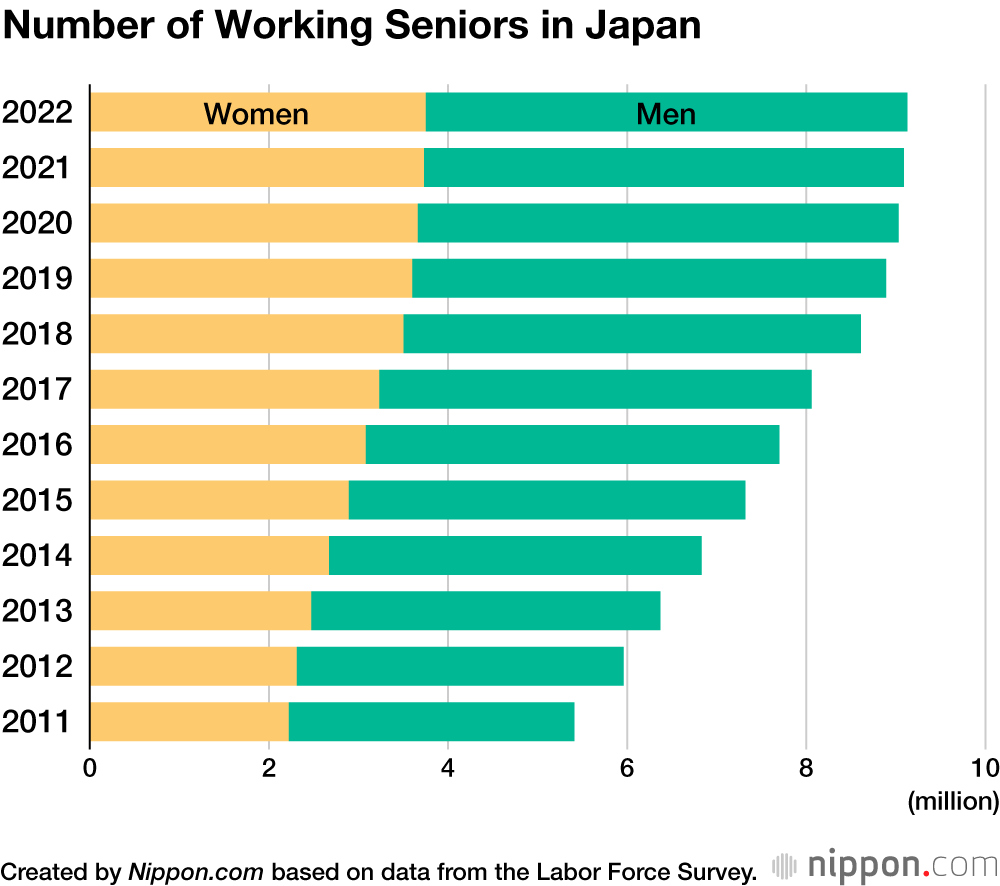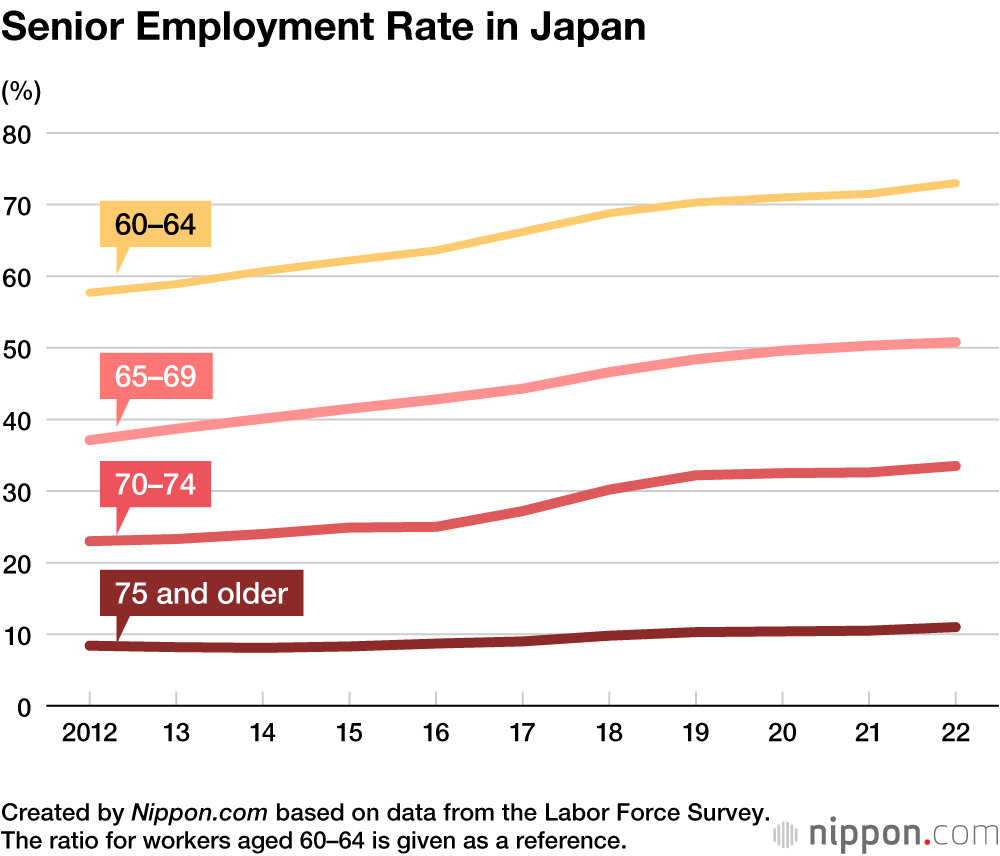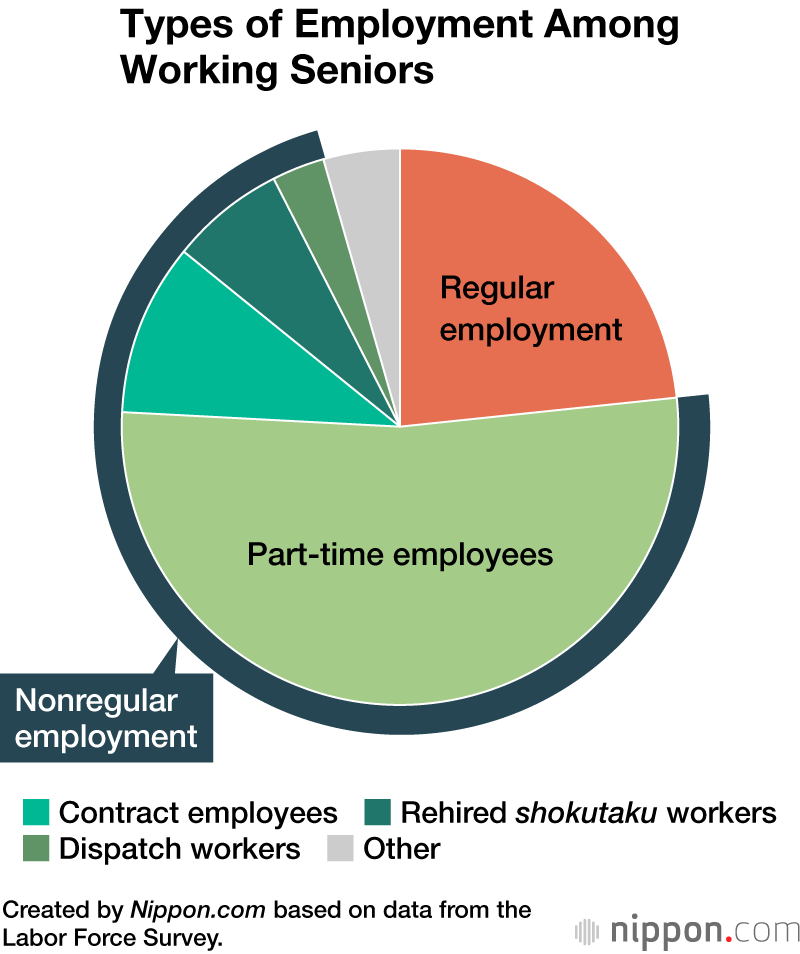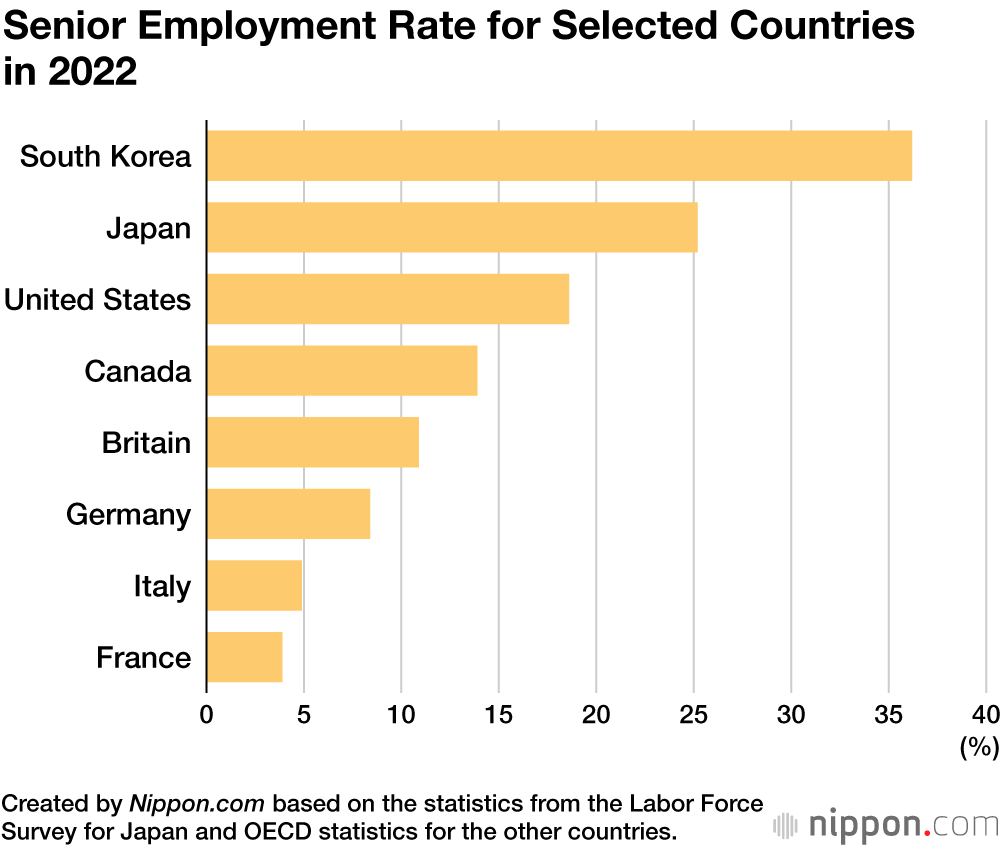
A Third of Japanese People Aged 70 to 74 Still in the Workforce
Work Economy Health- English
- 日本語
- 简体字
- 繁體字
- Français
- Español
- العربية
- Русский
Figures from Japan’s Ministry of Internal Affairs and Communications show that there were 9.1 million workers aged 65 or older in 2022, exceeding the previous year’s total for the nineteenth consecutive year. The ratio of seniors among the total number of workers was 13.6%, meaning that one out of every seven is 65 or older.
The employment rate among those 65 or older was 25.2%, a 0.1 percentage-point increase over the previous year. The employment rate for specific age groups was 50.8% for those 65 to 69 and 33.5% for those aged 70 to 74, both record highs, while 11.0% of those 75 or older were employed.
Among working seniors, 5.3 million are “employees,” which excludes self-employed workers and company executives. Within this group, 76.4% are nonregular employees, with part-time work accounting for more than half of the total. Meanwhile, 23.6% of working seniors are regular employees.
As Japanese society continues to gray, it has become increasingly difficult to maintain the traditional system in which a dwindling working-age population supports a growing elderly population. The revised Act on Stabilization of Employment of Elderly Persons, which came into effect in April 2021, calls on companies to make an effort to raise the retirement age to 70 and introduce a system of continuous employment, including reemployment, as part of their obligations. However, the era is rapidly approaching where it will be necessary for people to work even beyond the age of 70.
(Translated from Japanese. Banner photo © Pixta.)



